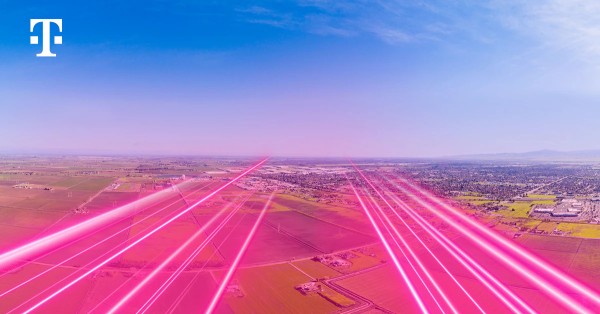5G and AI: The Convergence Powering Digital Transformation
As we move further into the digital age, we are witnessing a revolutionary shift in how technology impacts our lives. At the heart of this transformation is 5G, a powerful technology that continues to revolutionize industries, unearthing countless opportunities from mobile broadband to video streaming, and device integration. Anand Oswal, the Senior Vice President and General Manager of Network Security for Palo Alto Networks, in recent CXO Talk mentioned that 5G is not just changing how we live and work but is also converging with AI and other technologies to supercharge digital transformation across our critical infrastructure, industrial businesses, and even governments.
The Intersection of 5G and AI
One of the most fascinating aspects of the digital revolution is the simultaneous maturation of 5G and AI. This technological convergence is essentially creating a global network of connected devices that operate at lightning-fast speeds, with AI embedding intelligence into every aspect of it. AI’s potential to predict issues and optimize systems in real-time offers 5G networks an added layer of efficiency and adaptability, leading to business transformation on an unprecedented scale. At the same time, the integration of Information Technology (IT) and Operational Technology (OT) is breaking down traditional silos and creating new opportunities for efficiency, productivity, and agility in systems that were previously isolated from one another.
Security in the 5G Landscape
As exciting as the possibilities that 5G brings are, they also come with their own set of complex security challenges. The essence of 5G technology lies in high-speed data transfer and low latency, and while the technology itself has built-in mechanisms for security, user authentication, and encryption, these alone are not sufficient to counter the increasingly sophisticated threats posed by cybercriminals. As these threats evolve and become more complex, it becomes imperative for us to ensure protection across all layers: signaling, application, data, and management, going above and beyond the basic security features of 5G.
Securing 5G Infrastructure
Recognizing this need for advanced security, Palo Alto Networks is leading the charge in securing 5G infrastructure and private 5G networks. By providing the right level of visibility, segmentation, and threat detection capabilities, they not only protect the infrastructure but also ensure that businesses can see what’s happening within their 5G traffic. This level of transparency is critical in identifying and neutralizing threats before they can cause significant damage.
Converging Technologies for Business Transformation
The convergence of 5G, AI, IT, and OT is more than just a technological phenomenon. It’s a transformation engine that’s catalyzing profound shifts in how businesses and industries operate. This digital transformation is happening in areas that have a direct impact on our daily lives, such as energy, utilities, transportation, oil and gas, and telecommunications. By integrating these technologies, communities and countries around the world have the potential to connect everything, from autonomous cars and supermarkets to shipping ports, manufacturing plants, farms, water systems, and more, creating a truly interconnected global ecosystem.
Examples of Transformation in Action
Let’s take a closer look at some real-world examples of this transformation in action. Anand Oswal shared several interesting case studies. A leading telecommunications company, for instance, has been leveraging the power of AI in combination with 5G to build smart 5G networks that are not only fast but also adaptive. They use machine-learning algorithms to analyze network performance, predict traffic, and continually optimize their services, leading to improved customer experience and operational efficiency. Similarly, a chemical manufacturer is harnessing the power of private 5G to connect devices such as sensors used to monitor temperature and chemical composition, ensuring safety and stability. With real-time data, they’re able to optimize operations, automate dangerous tasks, analyze data, and even predict upcoming maintenance windows. The results are increased safety, better operational efficiencies, and a significant competitive edge in a highly competitive industry.
Security Threats and Attack Vectors in Relation to 5G
However, as the number of devices connected to a network increases, so does the attack surface. The high-speed data transfer capabilities of 5G can be a boon to cybercriminals who can infiltrate large volumes of data in a short amount of time. The threat landscape continues to increase, both in scale and sophistication. AI is having a compounding effect on all of these, making it even more critical for organizations to assume that at some point, they will be attacked with a scale and sophistication that resembles nation-state level attacks, and they have to be prepared for those days.
The Role of SASE in 5G Network Adoption
One of the solutions to these security challenges lies in the Secure Access Service Edge (SASE) approach. SASE brings every device and service on the network together securely, ensuring company protection no matter where the workforce is located or what device they’re using. This is particularly relevant for 5G networks, as threats can impact not only the enterprise but also users and devices that access internet websites that could potentially be malicious.
Introducing Prisma SASE 5G
In response to these potential threats, Anand Oswal mentioned that Palo Alto Networks is launching a new SASE 5G solution, Prisma SASE 5G, built specifically for businesses that use public 5G connectivity within their enterprise. This innovative solution uses the telco-provided SIM to authenticate users and provide granular policies across your network, giving you full visibility across your network and preventing attacks through a single pane of glass.
Securing 5G to the Enterprise Grade Level
For organizations embarking on their 5G journey, it’s crucial to build security into their strategy from the ground up. Anand Oswal’s advice for securing 5G to the enterprise grade level includes getting ready for sophisticated attacks, implementing a zero-trust approach to securing your 5G infrastructure, securing all layers of your network, fighting AI with AI, and simplifying security. Most importantly, security should not be an afterthought—it should be built from the get-go with security in mind.
Conclusion: Embracing a More Connected, More Secure Future
As the convergence of 5G, AI, IT, and OT continues, their combined potential to drive digital transformation across industries becomes more pronounced. We are on the cusp of a future that’s faster, more connected, and more secure. Cybersecurity must be at the forefront of business planning. It cannot be an afterthought, because the potential for digital transformation will provide us with an abundant future that’s faster, optimized, and more secure. We need to embrace this future, but we also need to ensure that we do so with security at the forefront of our minds.































